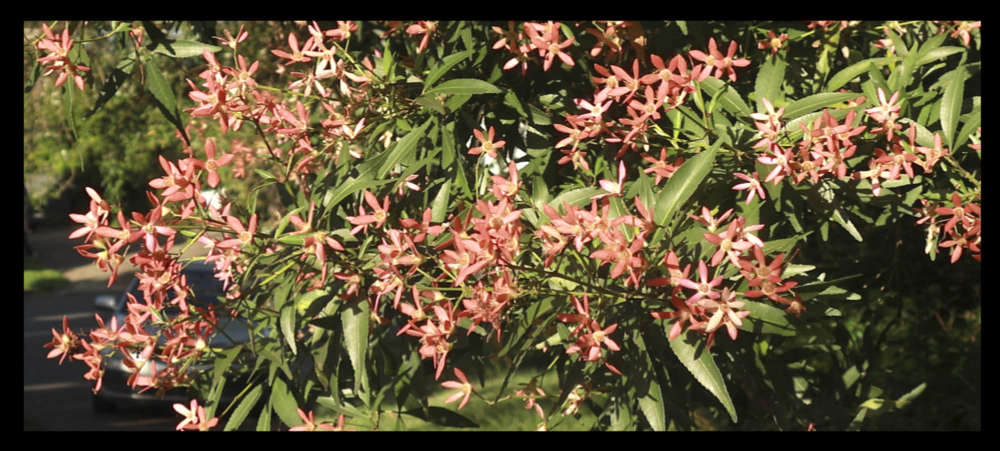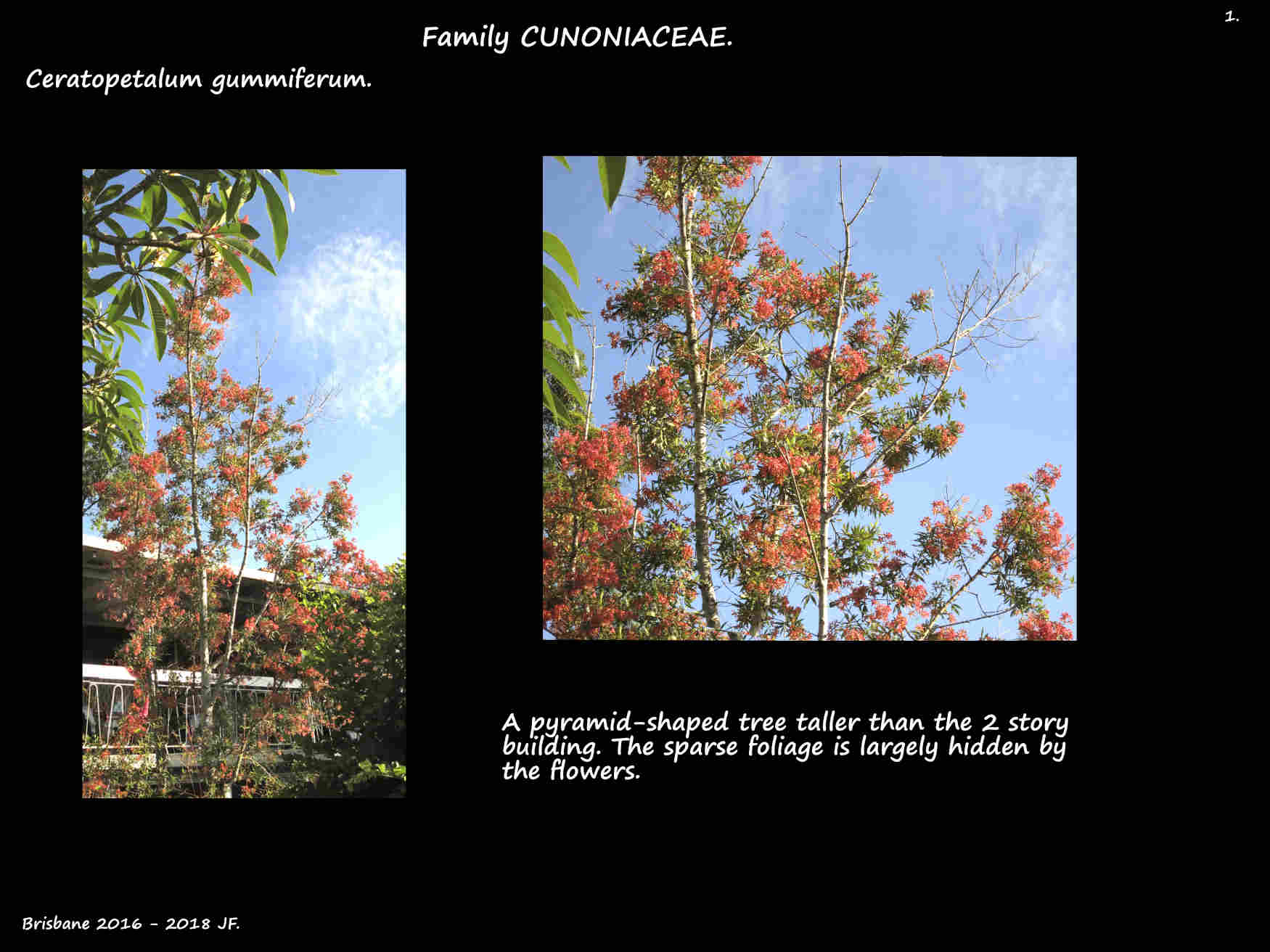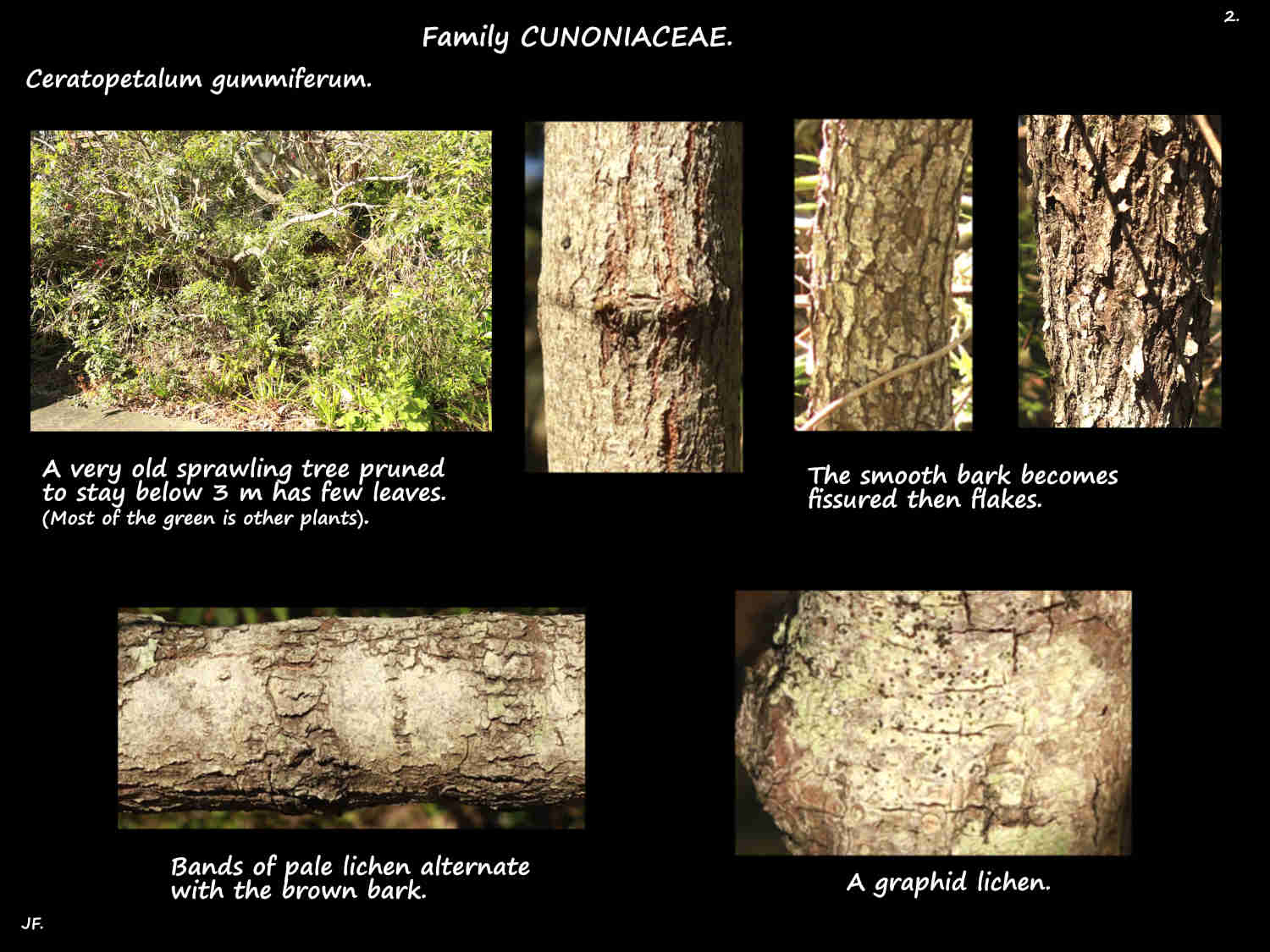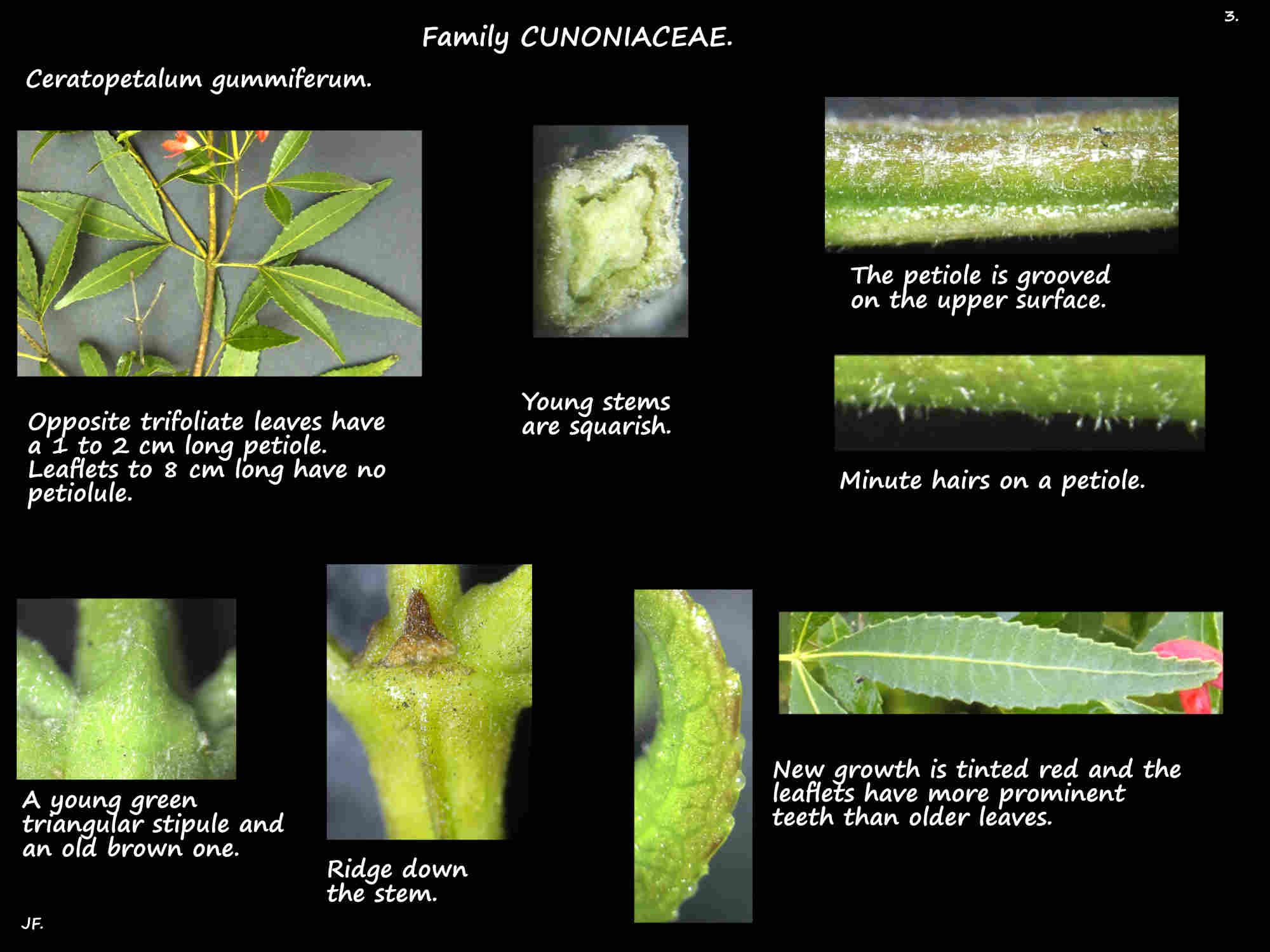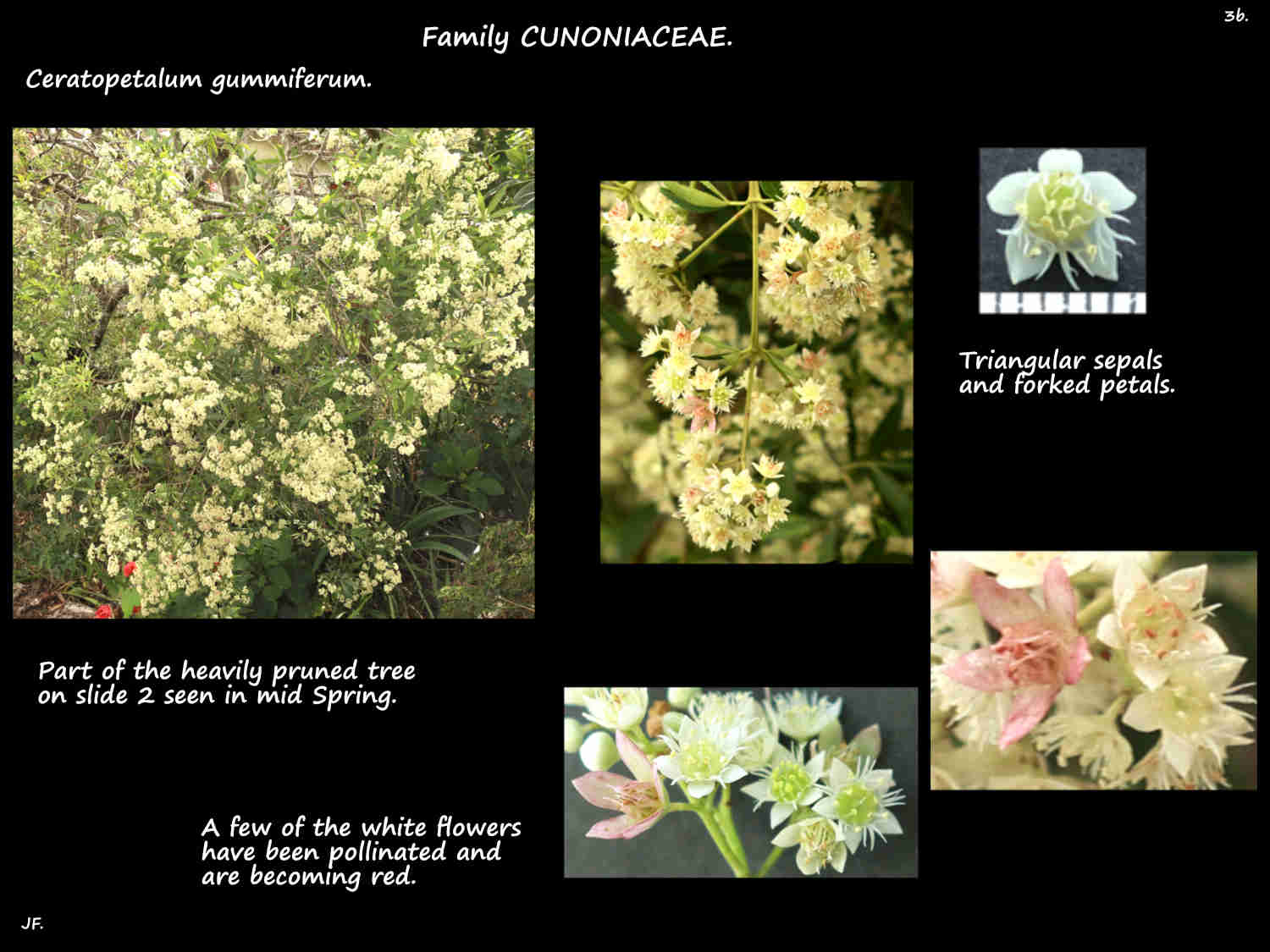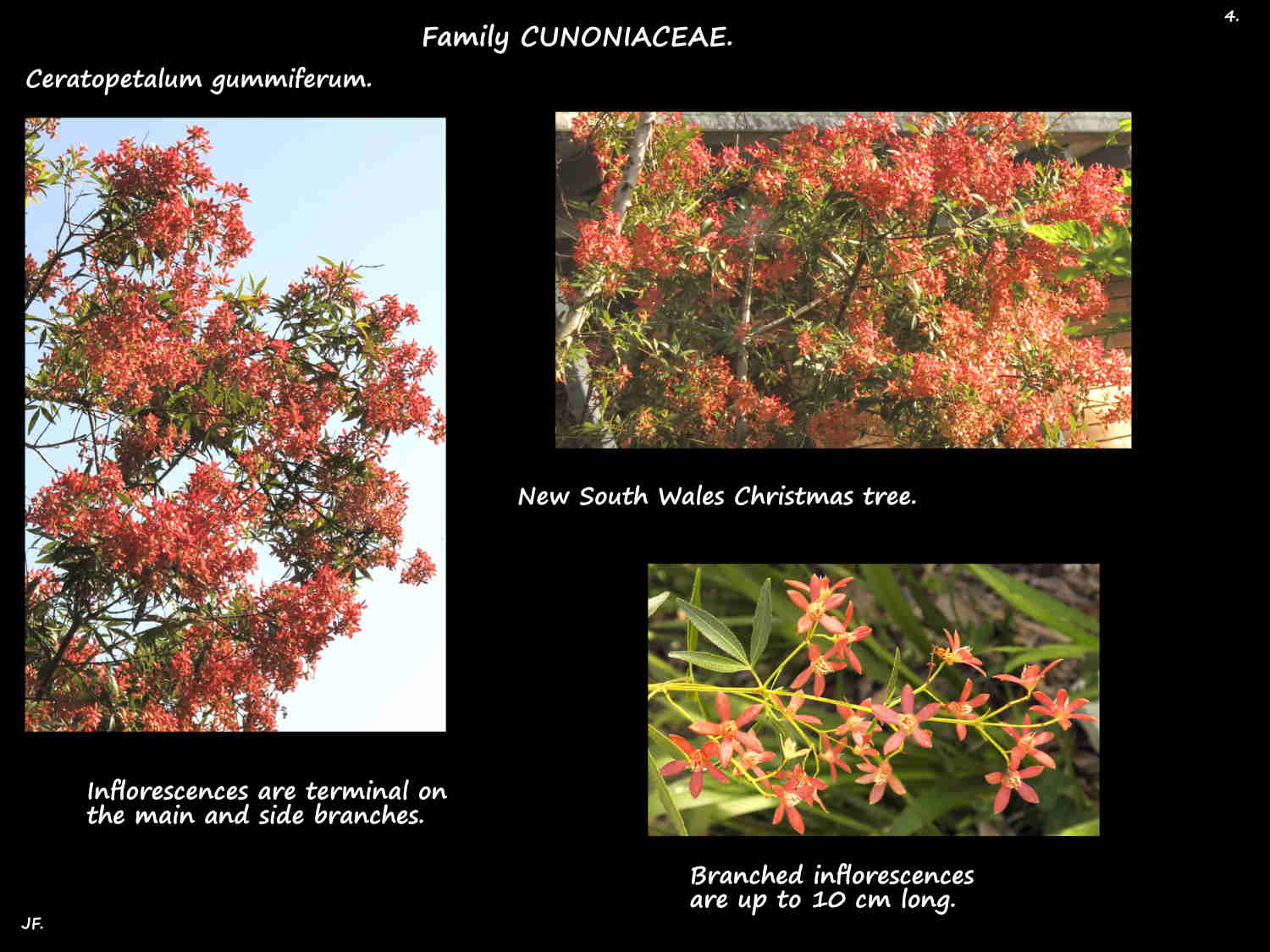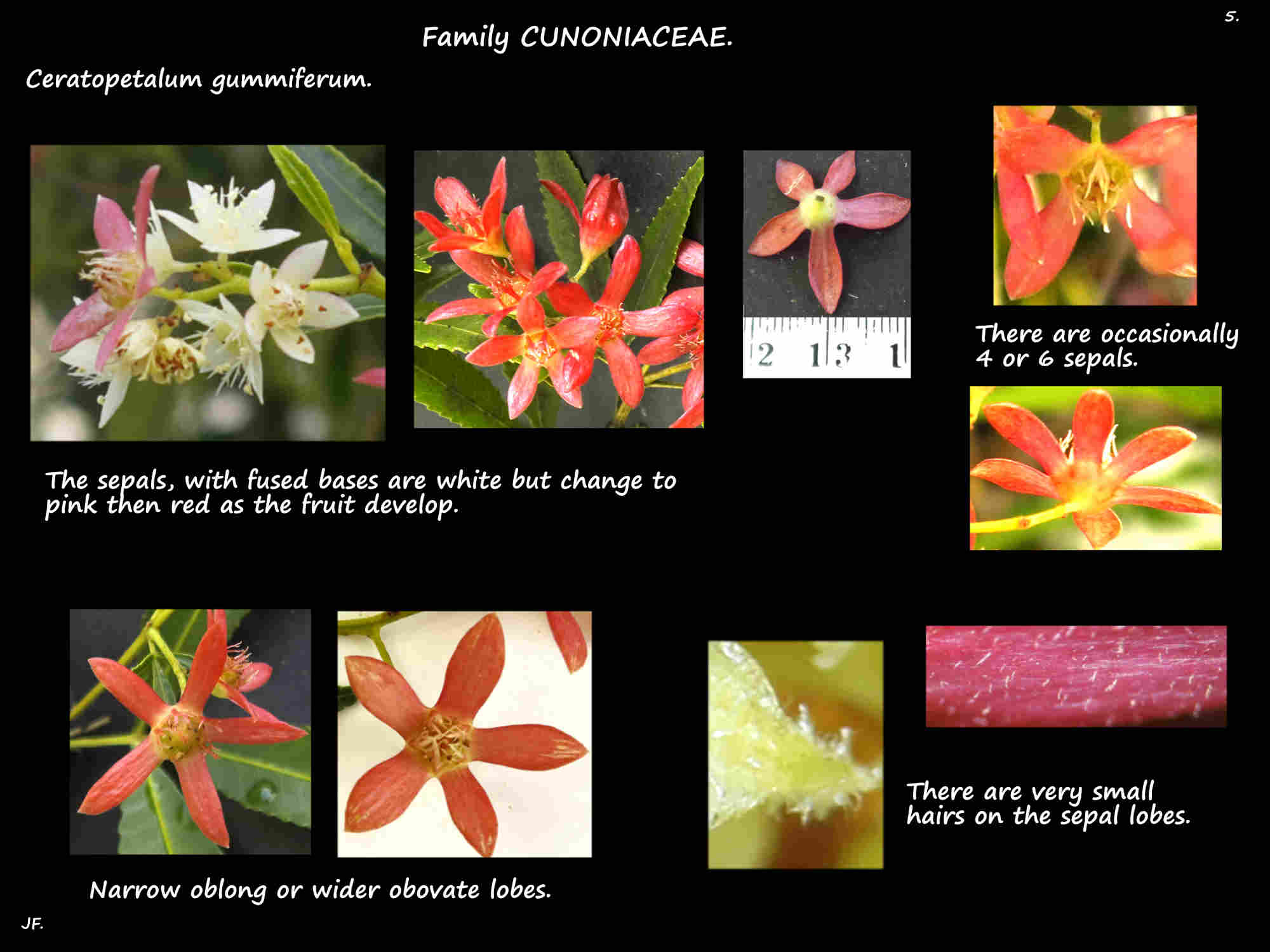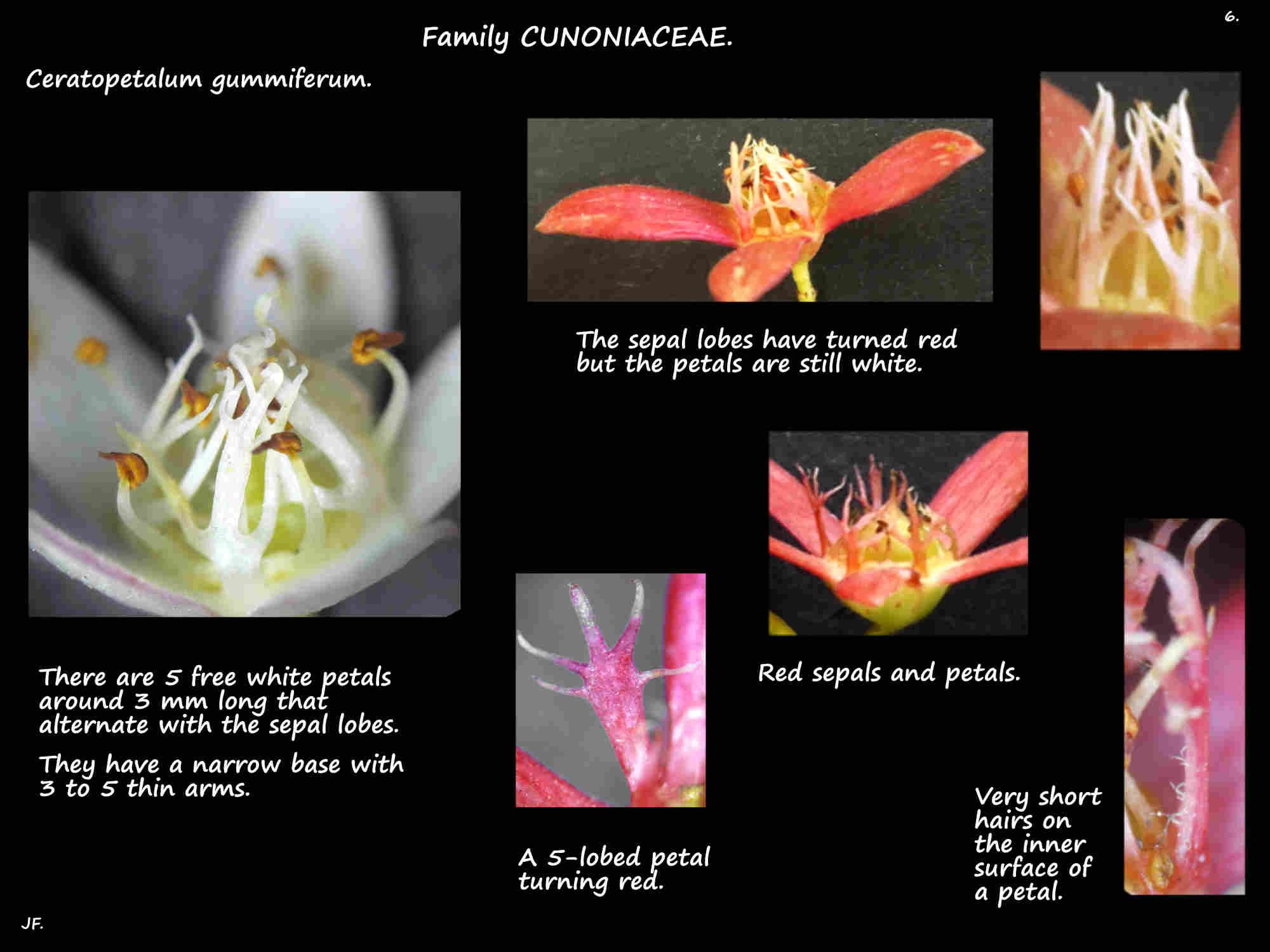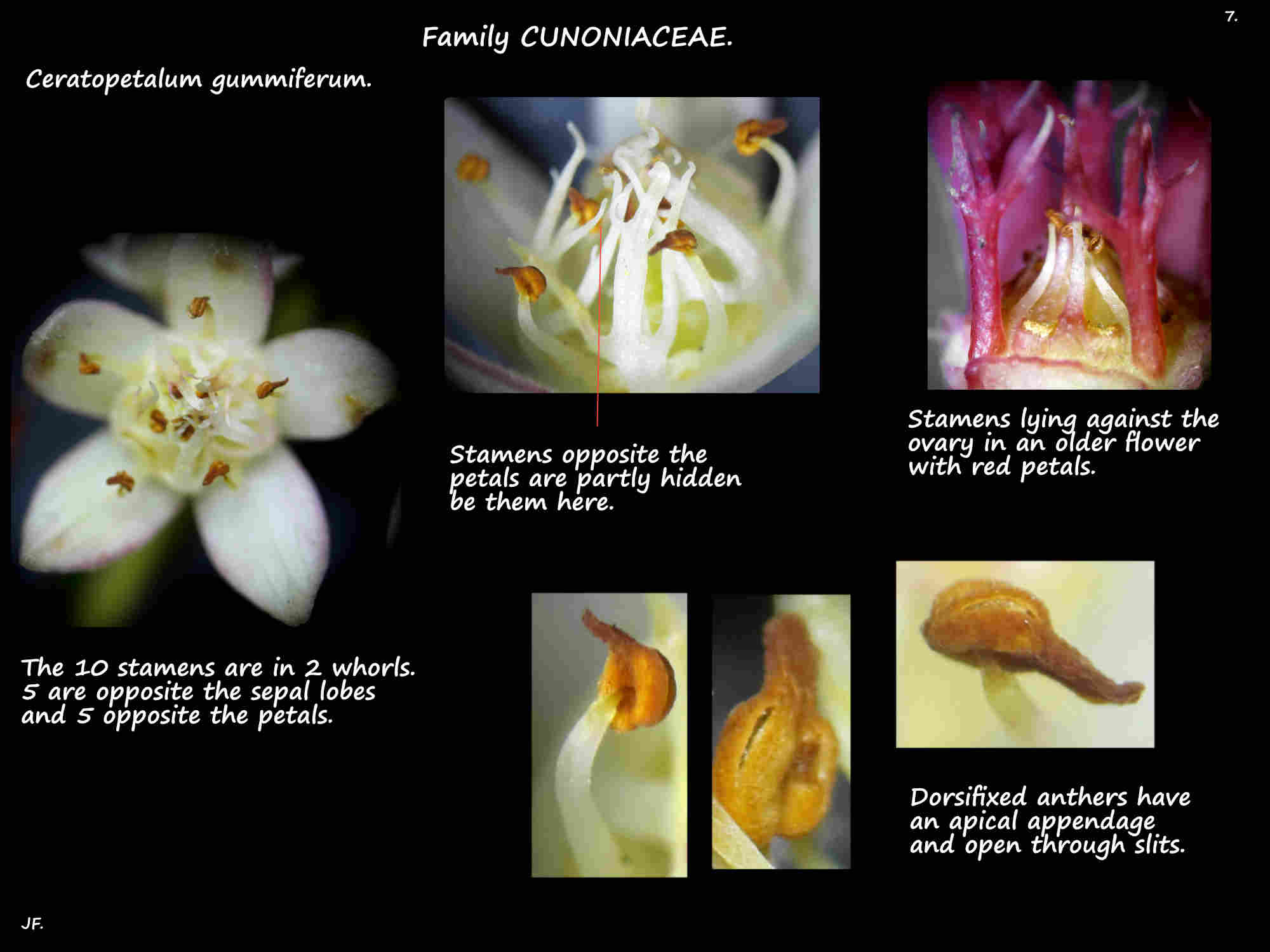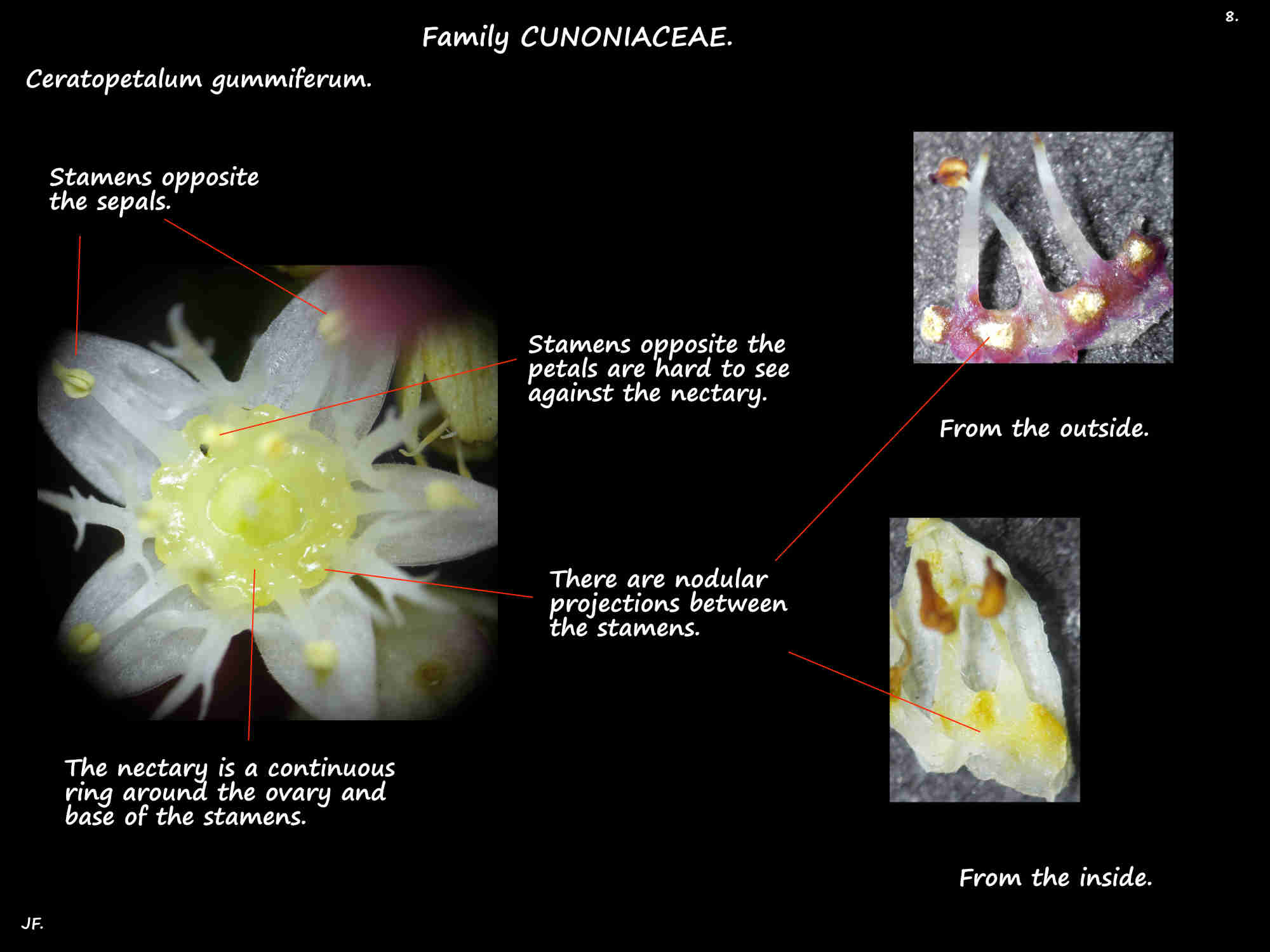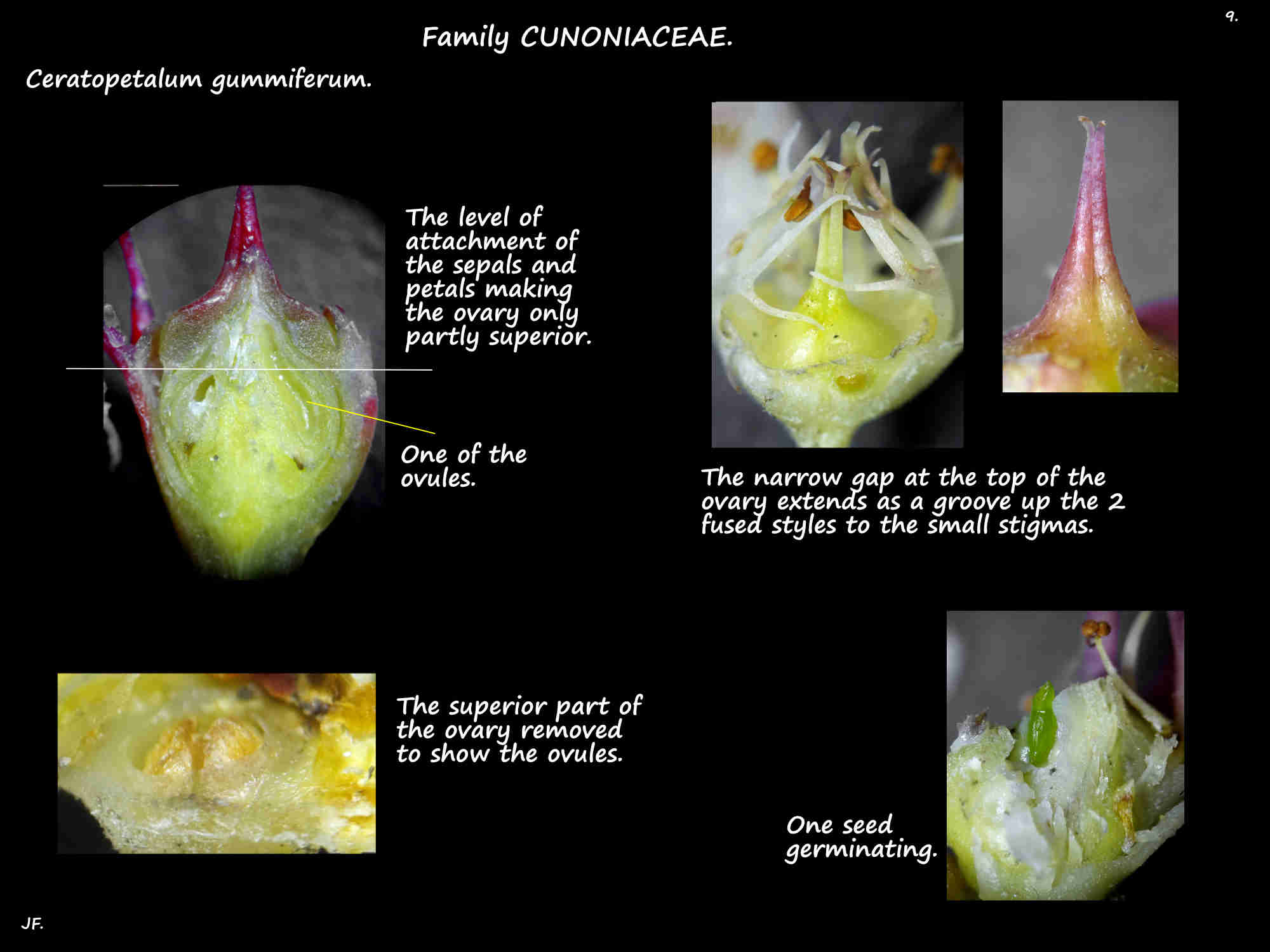Ceratopetalum gummiferum.
The New South Wales Christmas bush is seen as a shrub or tree.
As a rounded shrub they are around 1 to 2 m high and wide.
The central branches become more erect and they grow into pyramid-shaped trees.
Trees are usually 5 to 6 m high but they can be twice that in the wild.
Small branches are squarish while older ones are circular.
The trifoliate leaves are opposite and decussate.
The petiole, 1 to 2 cm long has a groove on the upper surface.
The leaflets, without a petiolule are narrowly ovate to elliptic with a pointed tip.
They are up to 7 or 8 cm long and 3 to 4 cm wide with regular small teeth on the edges.
There are leaf-like stipules 1 to 1.5 mm long between the petiole bases.
They are covered in a sticky shiny resin.
Terminal inflorescences, with small white bisexual flowers are branched clusters up to 10 cm long.
The calyx has 5 (4 or 6) white sepals with their bases fused for around 2 mm.
The lobes are narrow to widely ovate with a short pointed tip and may have a slightly narrowed base.
After pollination the sepals enlarge and become pink then bright red.
The shade and depth of colour depends on the amount of sun they get.
C. gummiferum is one of the only 3 species that have petals.
There are 5 free white or cream petals 3 mm long that alternate with the sepal lobes.
Petals have 3 to 5 flat, narrow lobes that are longer than the narrow base.
They persist on the fruit.
There are 10 stamens in 2 whorls with dorsifixed anthers that open inwards.
Those opposite the sepals are longer and more incurved than those opposite the petals.
The pollen sacs (thecae) have a downward pointing basal lobe.
There is a small appendage from the top of the connective joining the sacs.
The stamens, or parts of them persist on the fruit.
The nectary is a ring around the base of the stamens with small upward projections between the filament bases.
The mostly inferior ovary, 4 to 5 mm long is formed from 2 (3) carpels.
The superior parts of the carpels are fused apart from a thin gap at the top.
Each locule has 4 ovules in 2 rows with axile placentation.
The 2 fused styles have a groove along the whole length that is an extension of the gap between the carpels.
The fruit are hard and woody with the sepal lobes (wings), up to 1.5 cm long also being woody.
Ceratopetalum gummiferum cultivars are used as garden plants and cut flowers.
‘Albery’s Red’, grown for cut flowers is a small compact tree with masses of dark red flowers.
There are numerous other cultivars with flowers in various shades of pink, red, orange-red plus white.
Ceratopetalum ‘Johanna’s Christmas’ is a dwarf shrub up to 1.5 m high and wide with red calyces.
J.F.
